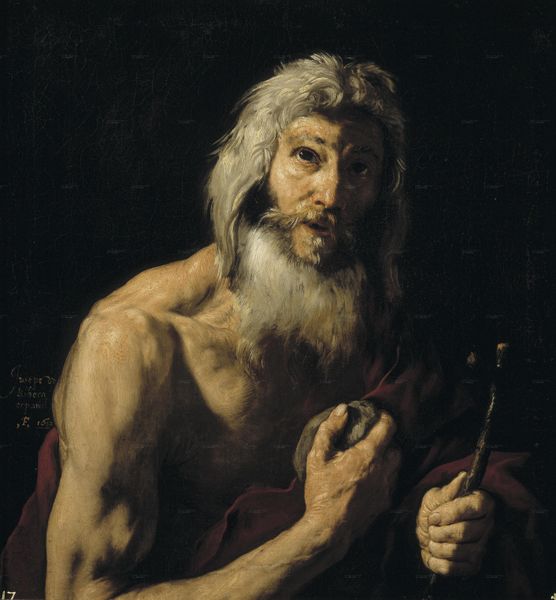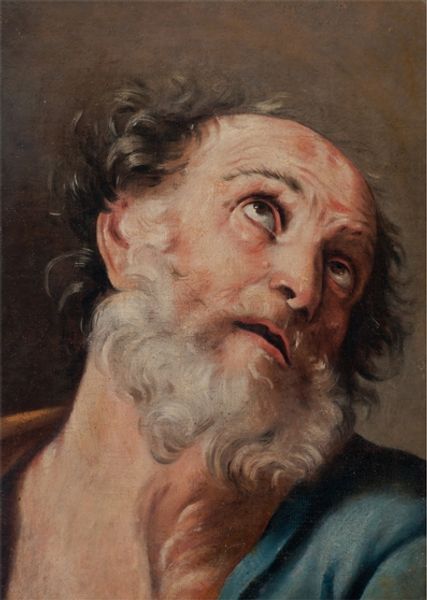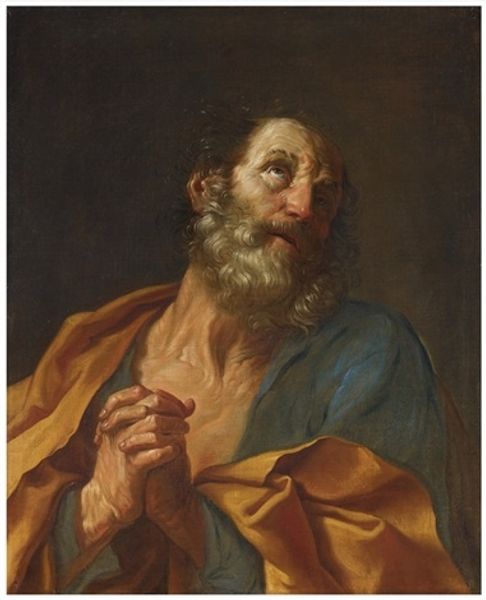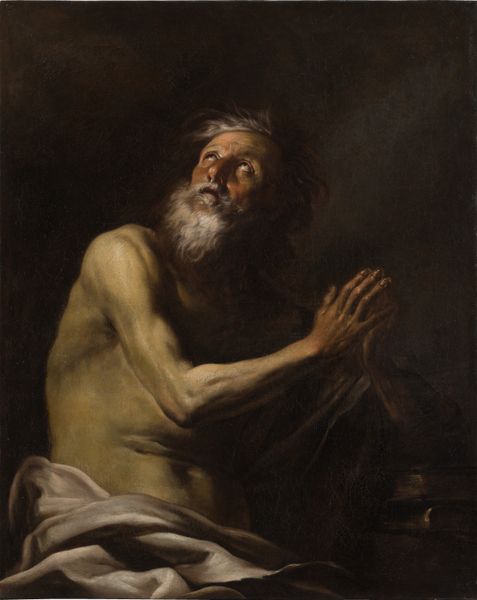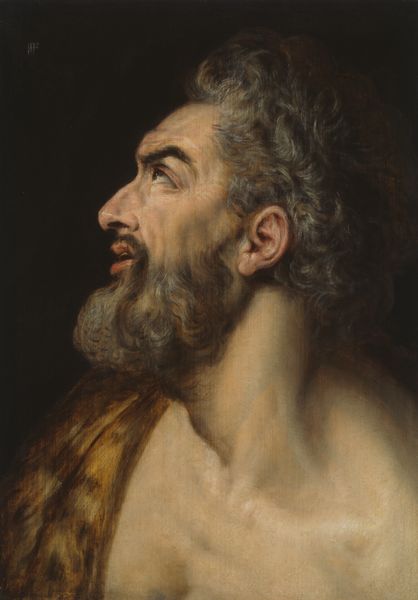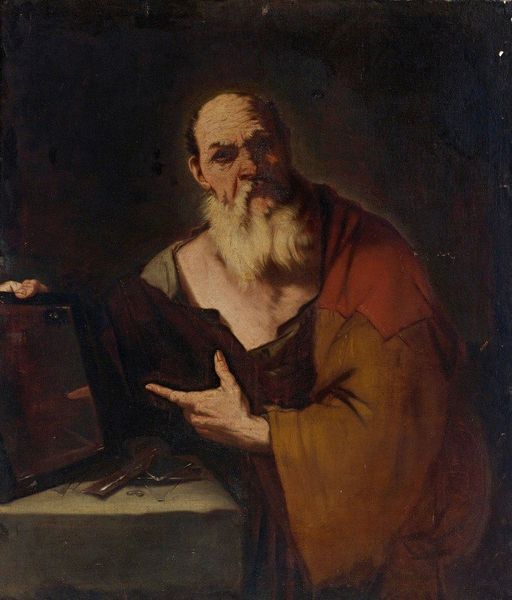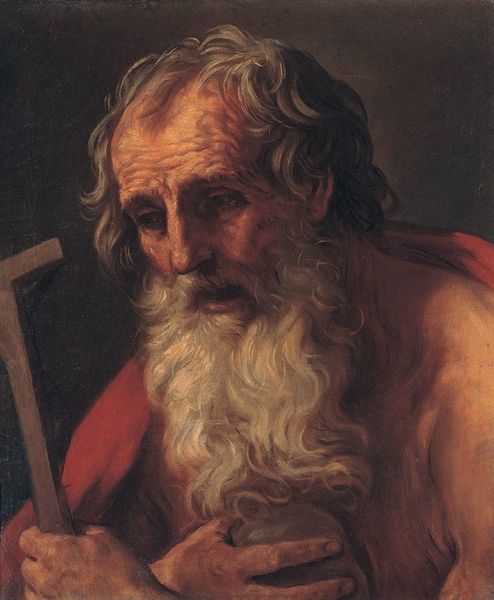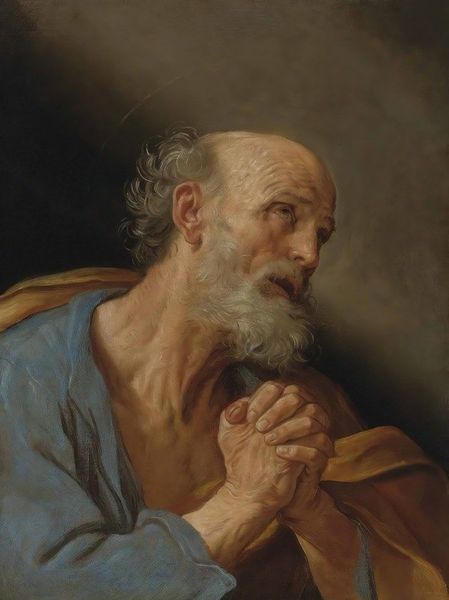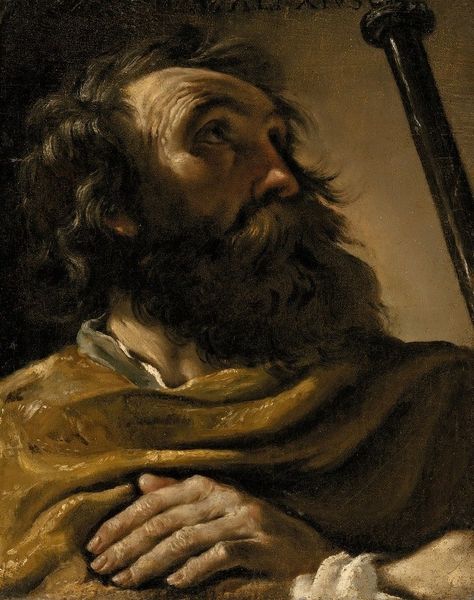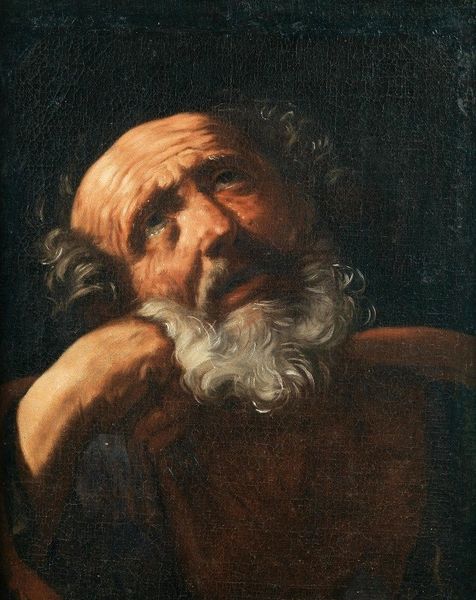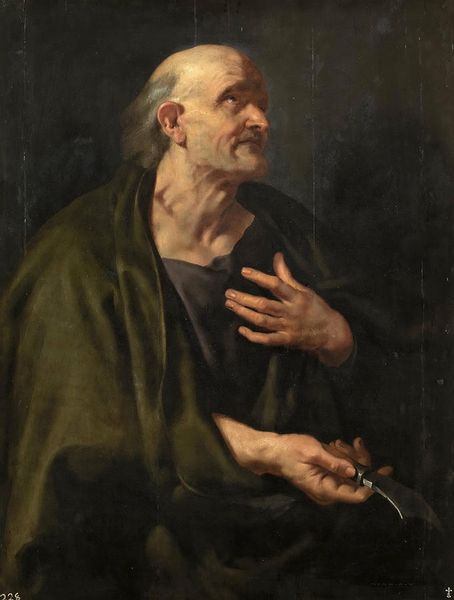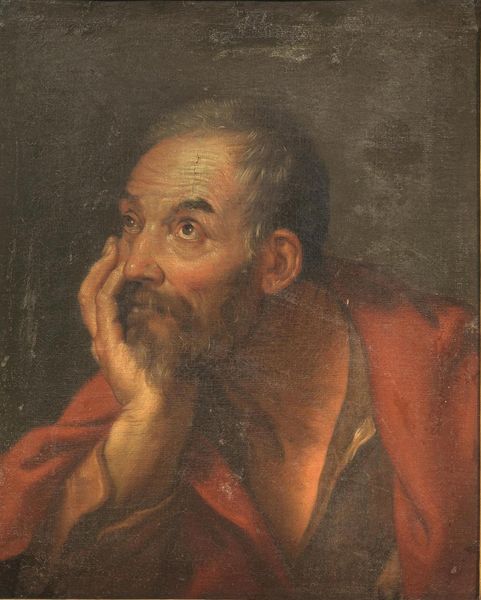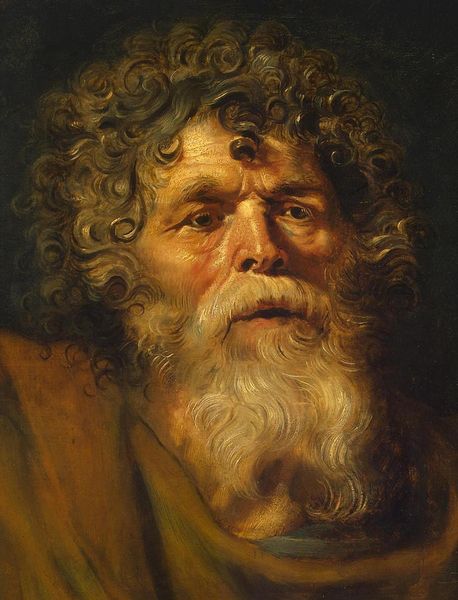
painting, oil-paint, canvas
#
portrait
#
baroque
#
painting
#
oil-paint
#
canvas
#
history-painting
Dimensions: 98 cm (height) x 72.5 cm (width) (Netto)
Girolamo Troppa painted Saint Peter Penitent in oil on canvas. Observe Peter's gaze directed upwards, a universal appeal to divine forgiveness, a motif as old as humanity's first recognition of its fallibility. The keys at the bottom allude to Peter's role as the keeper of the gates of Heaven, symbols of authority and responsibility, yet here, cast aside, hinting at a moment of profound self-doubt. This echoes through centuries, from ancient depictions of rulers with discarded emblems of power to modern symbols of failed leadership. Note the clasped hands, a gesture of supplication and repentance. We see this echoed in countless images across cultures, a universal language of remorse. It evokes a visceral response, tapping into our collective understanding of guilt and redemption, a primal drama playing out on the canvas. The image serves as a potent reminder of our shared human condition, forever oscillating between aspiration and failing.
Comments
statensmuseumforkunst almost 2 years ago
⋮
Sheltered by an outcrop of rock, overlooking the restless sea, we see Saint Peter wringing his hands, eyes turned heavenwards – an iconography typical of this era’s depictions of ‘Saint Peter Penitent’. The literary source of the scene appears in all four gospels of the New Testament, which give almost identical accounts of an episode from the Passion in which a fearful Peter betrays Christ three times in the gateway and courtyard of Pilate’s house. When Peter realises that Jesus’s prediction, ‘this very night, before the rooster crows, you will deny me three times’, has just come true, he cries tears of despair and repentance. The weeping Saint Peter was not just a model image of remorse and penitence within the Catholic church. During the Danish Baroque era, particularly under the reign of Frederik III, the teachings of Lutheran orthodoxy were closely associated with the concept of ‘pønitense’. The road to salvation was paved with penance and atonement, remorse and conversion.
Join the conversation
Join millions of artists and users on Artera today and experience the ultimate creative platform.

